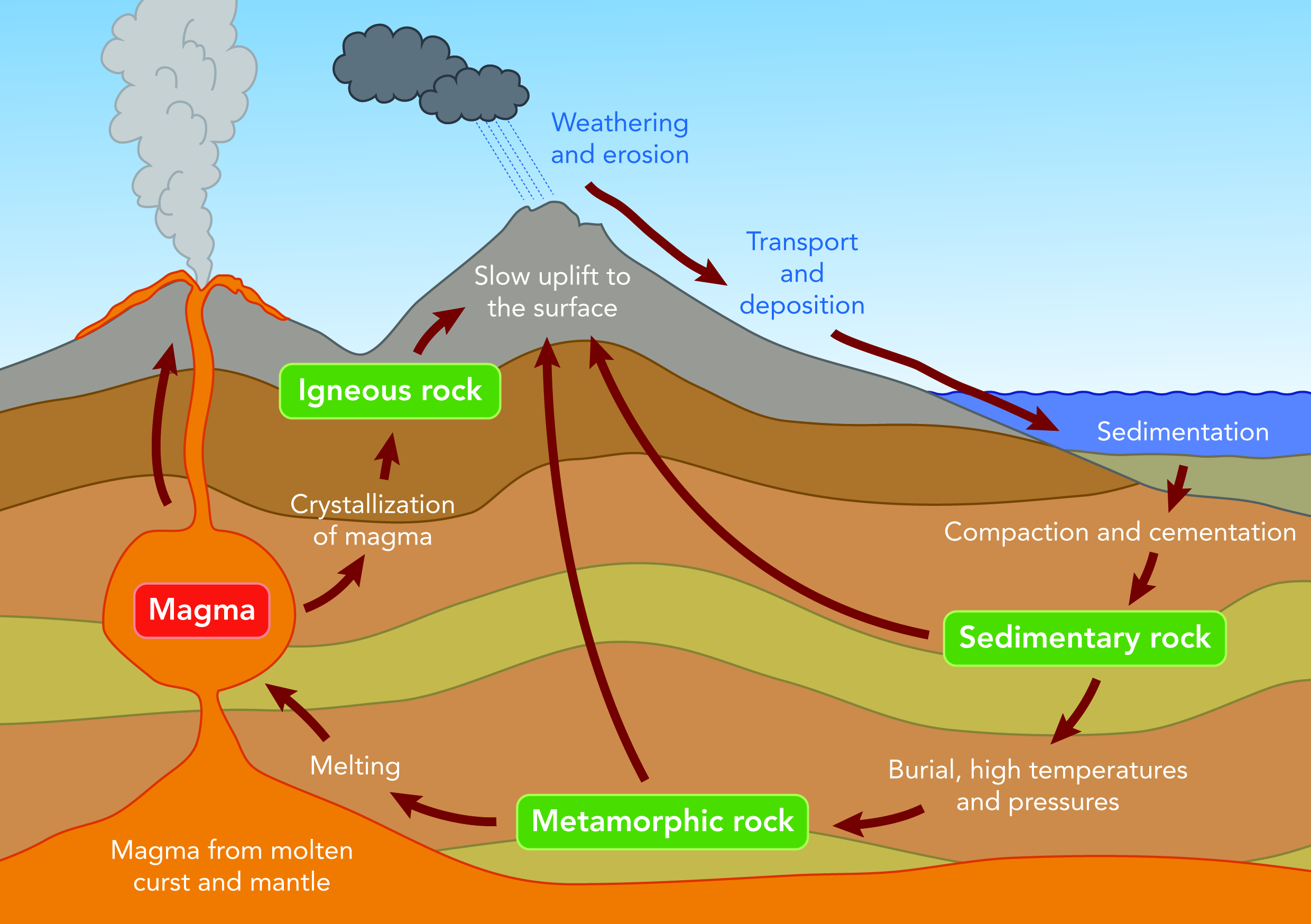Does the Rock Cycle Ever End Explain
In this investigation students will discover what happens to rocks under lots of pressure and heat through a simulation that uses crayon shavings. The process of transformation of rocks from one form to the other in a cyclic manner is known as the rock cycle.

Rock Cycle Definition Steps Importance Diagram
Convection within the Earths interior which leads to slow but significant changes on the Earths crust.

. Some igneous rocks are eroded and turned directly to sedimentary rocks. No it doesnt have an ending or a beginning because it is aseries or repeating steps. The best way to explain the cycle is with the rock cycle diagram below and with examples of how each rock type can transform into another rock.
Even if the rock dies out itll changeto a new type of rocks and then repeats over and over again. This results in the formation of sedimentary rocks. Sedimentary metamorphic and igneous.
The rock cycle picture diagram shows an upper level view of the process in which these types of rocks will be created or transformed. In this investigation students will discover what happens to rocks under lots of pressure and heat through a simulation that uses crayon shavings. The rock cycle diagram clearly shows all the steps components of the rock cycle including the end results and the movement of the process.
Diagram of the Rock Cycle Explained. A rock cycle is known as a rock cycle because the wheel of a bicycle spins at a total 360 degrees and therefore never has an interfierence to when it comes to an end. The cycle has no beginning and no end.
Processes that explain the. A diagram of the rock cycle is a way to explain the formation or deformation of the three types of rocks we find on our earth. Most sedimentary layers are pushed under the crust where they undergo heat and pressure and are transformed.
This ultimately leads to the formation of the major rock types and is driven primarily by two processes. The hydrologic cycle which is the recycling and movement of water air. This happens when the ejected magma still has gases inside of it so when it cools the gas bubbles are trapped and end up giving the rock a bubbly texture.
These sedimentary layers have remained sedimentary layers without going through the rock cycle. Some sedimentary layers have ended up on the continental plates. The rock cycle does not have a beginning or an end because it could rotate either way.
Explain the rock cycle. Rocks at the surface are lying in place before they are next exposed to a process that will change them. The rock cycle is the combination of all the processes that act to break down rocks move sedimentary materials from place to place and produce new rocks.
Rocks deep within the Earth are right now becoming other types of rocks. Hot lava cools down to form igneous rocks. It includes the following processes.
The rock cycle is a simple breakdown of how physical material is recycled on the Earths surface. These sedimentary layers have remained sedimentary layers without going through the rock cycle. The purpose of the rock cycle is to allow rocks of any class to be recycled into another type of rock Process magma melts magma rises magma cools and crystallizes igneous rocks are formes igneous rocks begin to weather.
The Rock Cycle The rock cycle is a series of processes that create and transform the types of rocks in Earths crust. An example of this would be pumice. If the diagram does not make sense a simple explanation of all the steps at play and their end results is given below-Steps of the Rock Cycle Weathering.
Igneous rocks are then broken down into small particles which are transported and then deposited.

3 5 The Rock Cycle Physical Geography And Natural Disasters

Comments
Post a Comment